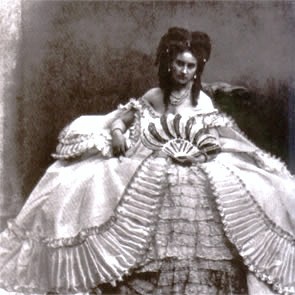|
FRANCO LASTRAIOLI
ANNA CHECCOLI |
|
|
|
|
|
|
|
|
He was born in 1931 at Florence,where he
lives and works. In 1924 André Breton published the first Manifesto of Surrealism where he explained the meaning of the movement, that is the attempt to express the inner self in complete freedom. To attain it,in painting as in any other field, it is necessary - according to the surrealists - to let ourselves be driven by the subconscious,as happens in a dream when images follow one another without an apparent link, revealing our hidden reality, often unknown even to ourselves. Many historical avantgardes, although having left an important mark, have come to an end within a few years. Surrealism, on the contrary, is one of the few currents which has had a primary role in the development of modern painting up to today, also because several truly surrealist painters are still living and working. Among these is Franco Lastraioli, an artist who, in the rather repetitive horizon of contemporary art, although inspired by a movement dating from 1924, has understood its up-to-dateness, freely expressing himself with an appropriate and autonomous language. One of his main characteristics is the meticolous precision used in representing objects. This trompe-l'oeil exacteness exceeds the capability of the human eye, or, we should say, of reason - to which the eye transmits the images - which synthesizes everything we see. It creates, therefore, a different reality from the one we are used to seeing, more analythical, more "real" than reality itself, that is "surrealistic". But this is not enough. Lastraioli attains surreality also by taking away actual objects (which are completely different one from the other) from their original environment and putting them together in an apparently absurd way. This brings to mind a well known phrase by Lautréamont, also quoted by Max Ernst,which states that, in surrealistic painting, "the casual encounter between a sewing machine and an umbrella on an operating-table" can be beautiful, because the two realities are absurdely "in a place where both feel alienathed" thus escaping their identity and making love. I have quoted this passage because it shows how Lastraioli belongs to the most authentic historical surrealism. I must add though that, while in historical surrealism these heterogenous encounters often create a slight feeling of anguish (as in Ernst, Masson, Delavaux and Magritte himself, our painter's most direct forerunner), Lastraioli instead succeeds in expressing a sort of happiness, similar to an escape from the harsh reality of daily life in order to find shelter in the beauty of dreams. In reference to this, Dino Buzzati rightly wrote: "Lastraioli's dreams are happy fairy tales, in a transparent spring morning air, with no mistery and in a festive atmosphere". Lastraioli himself says: "I have always painted with the certainty that painting is for me an important reason of life. My stories are visions of a world where, prodigiously, dreams destroy reality: it is possible to fly with the wings of fantasy towards wonderful spaces, going back to the lost paradise of our childhood. It is a world of painted dreams, permeated by impossible desires and by strong emotions, plunged in the clear light of an inner truth that is absolute and consoling. I paint a lot and by painting, I live". These are the characteristic features that Lastraioli's work has always had. Because, if it is true that he embraced pure surrealism after a number of years of research, it is also true that even when his work showed a slight Dada influence, building imaginary machines, he has always shown the same imaginative power, the same need to escape towards dreams: there has always been in his work a subtle irony, and, above all, the pleasure of taking apart objects and putting them back together in a different personal sequence. Therefore, I believe that Lastraioli has always been a surrealist, showing however originality and indipendence, proving him to be an artist in the highest meaning of the word. (From: 1995 Catalogue presentation of Piero Adorno, and an autograph text of the Maestro Franco Lastraioli) |
|

